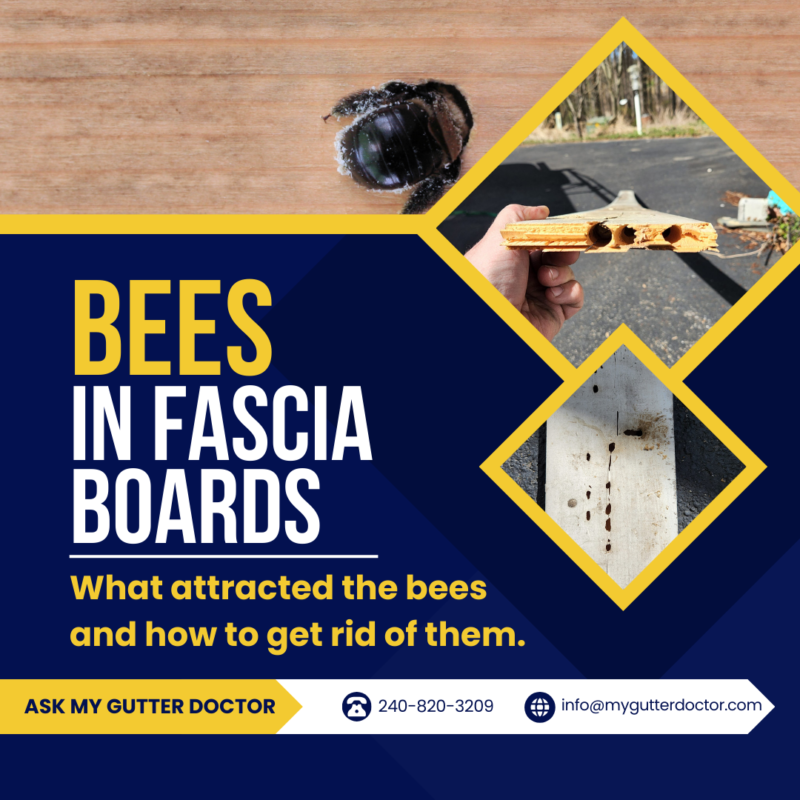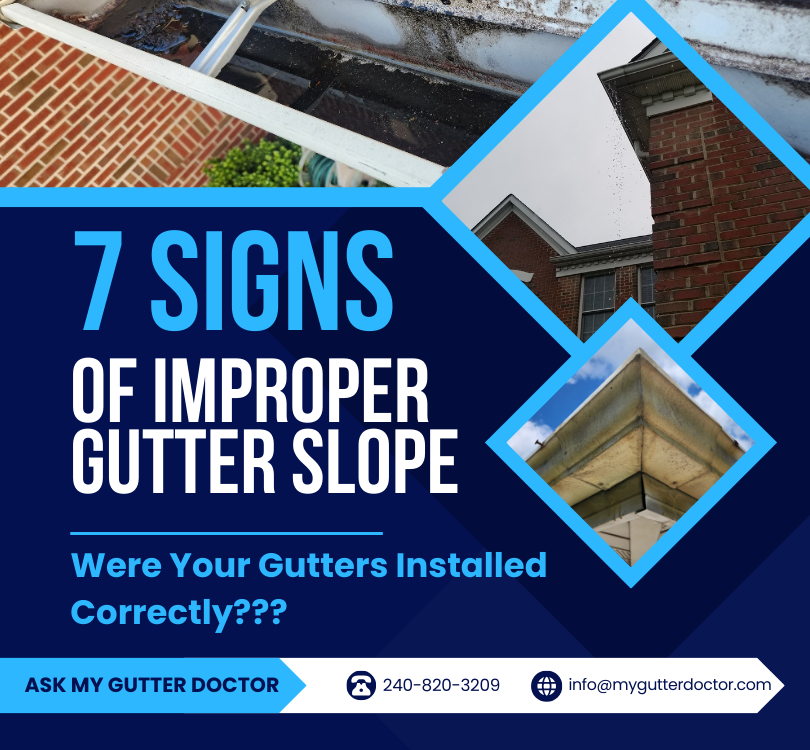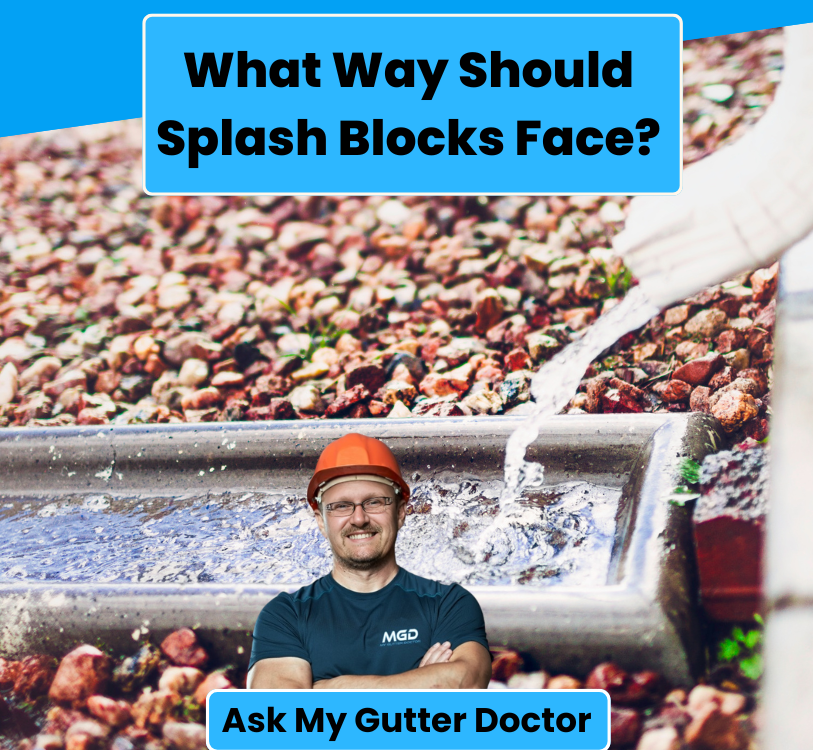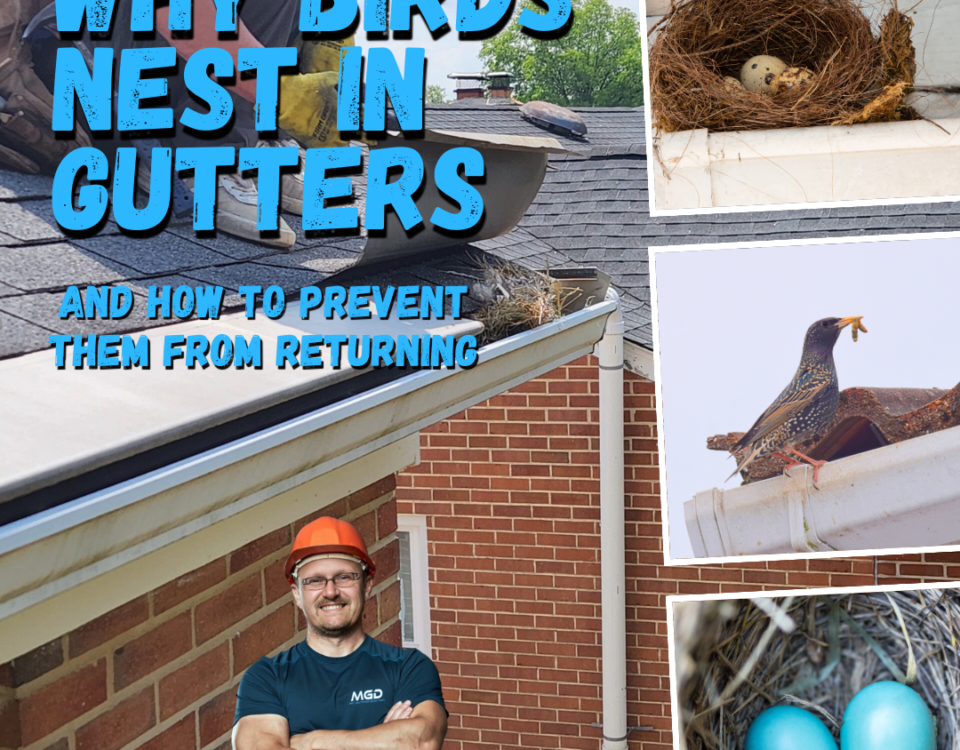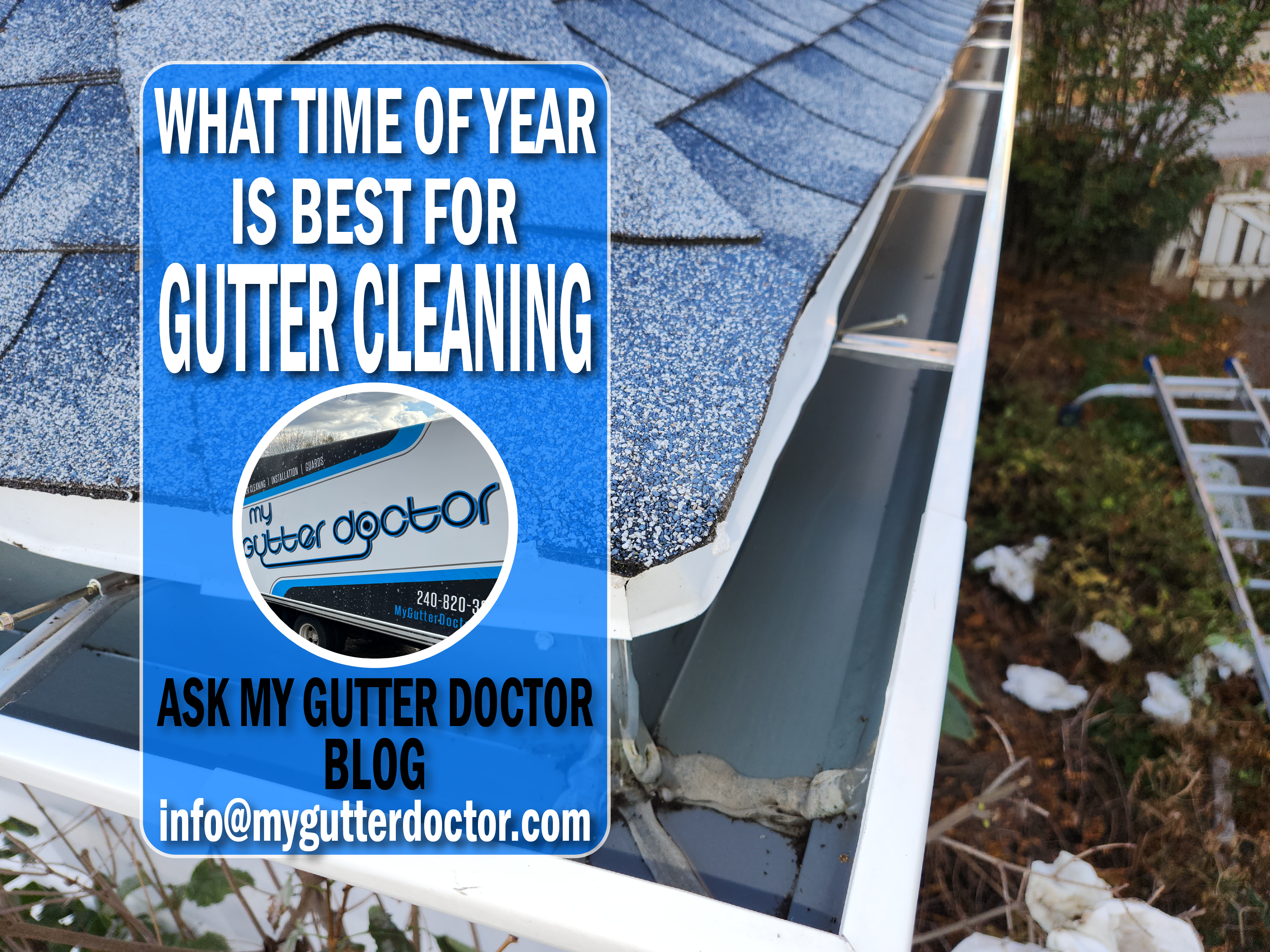
What Time Of Year Is Best For Gutter Cleaning?
March 24, 2023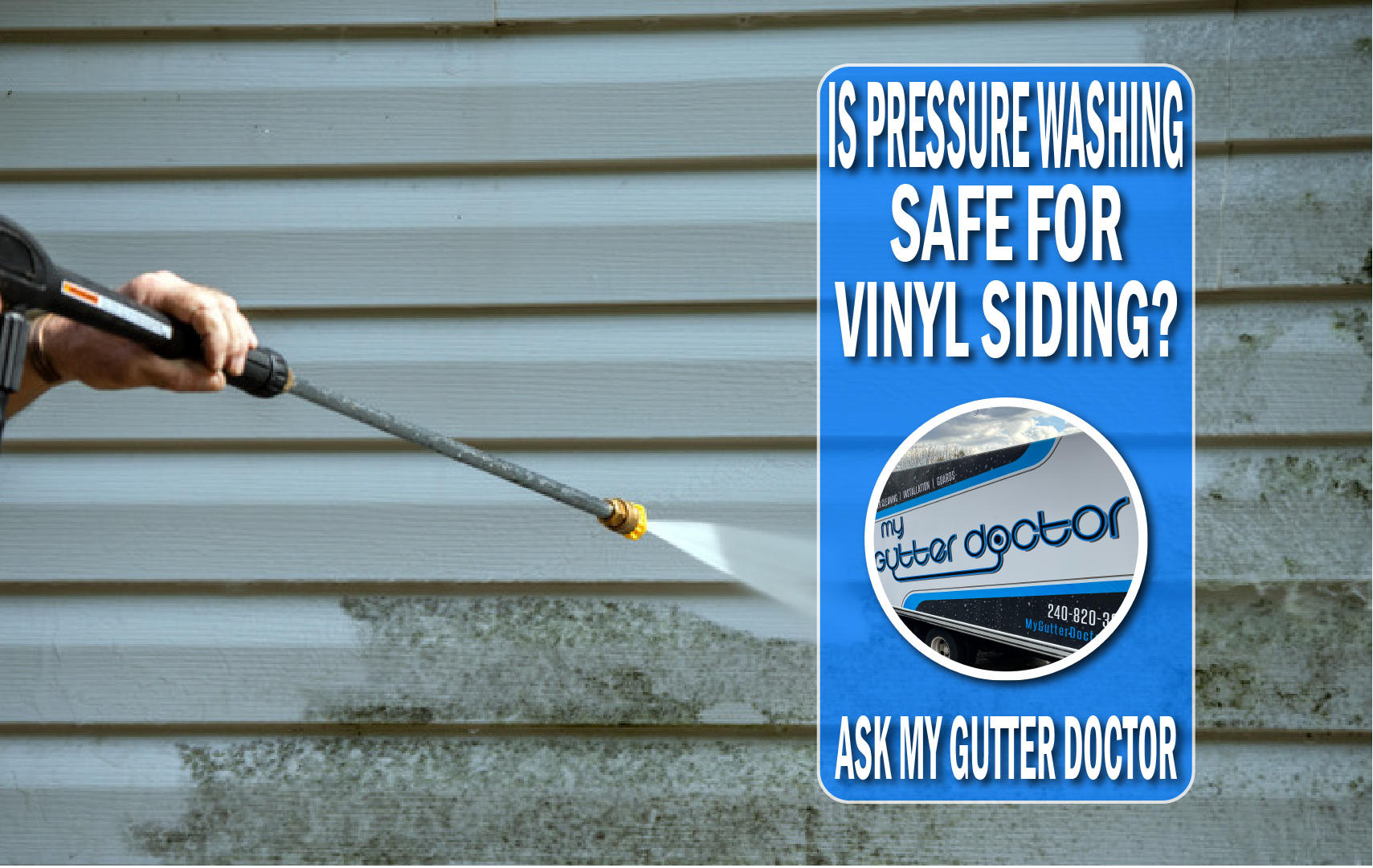
Is Pressure Washing Safe For Vinyl Siding?
April 18, 2023CARPENTER BEES IN FASCIA BOARDS
Have you ever wondered why bees swarm around your gutter systems and/or rooflines? That’s because carpenter bees like to burrow and nest in fascia boards, soffit, and in messy gutters. Carpenter bees are natural burrowers, meaning they dig their own holes or tunnels to nest in and lay eggs. Since fascia boards are safely tucked behind gutters they create a perfect habitat for carpenter bees and other pests.
SPRING SEASON IS BEE SEASON
We like to call the Spring and Summer seasons “Bee Season” around here at My Gutter Doctor. Especially the last few years. More and more we are starting to see bees and wasps nesting in and around the gutter systems.
Bees are attracted to gutter systems that have lots of debris piled up in them, as the debris provides cover for the bees to build, as well as building material. Therefore, in messy gutters or behind the gutters are ideal spots for bees to nest.
FASCIA BOARDS
Trim boards that are installed to the roof trusses (rafters) to seal off the roofing eave are called fascia boards. The main purposes of fascia is to cover the open ends of the exposed roof rafters, and to provide a surface for gutters to be mounted to.
Without fascia boards you would be able to see inside the roof and even into the attics on some homes. In addition to that gutter systems would all need to be installed with roof straps without a board to mount to.
SIGNS OF BEES IN FASCIA BOARDS
-
INCREASE IN BEE ACTIVITY AROUND THE HOME OR INSIDE THE HOME
-
BEES GOING INTO OR BEHIND GUTTERS, SOFFIT, OR ROOFLINE
-
VISUAL DAMAGES TO FASCIA BOARD OR SOFFIT
-INCREASE IN BEE ACTIVITY AROUND THE YARD/HOME
Anytime bees are nested around your home or yard you typically will see an increase in bee activity in the area.
When bees nest inside gutters or behind the gutters in fascia boards, then the nest are usually up higher than we normally look. That makes the chances of randomly spotting them slimmer if we aren’t actively looking for them. Therefore it is recommended to scan your roofline for excess bee activity through the spring and summer months.
-BEES GOING INTO OR BEHIND GUTTERS, SOFFIT, OR ROOFLINE
Bees swarming around your roof line or gutters is often a direct indication that you may have an infestation somewhere along the roofing eave. Especially if they keep returning to a certain area in particular.
-VISUAL DAMAGES TO WOOD (HOLES/BORE HOLES)
In the photo below you see a fascia board that has had the gutter removed. Looking at the face of the board you can see that there are minimal signs of bee damage. In fact it pretty much looks like normal wear. I The board below is a classic example of how it can be difficult to notice carpenter bee damage to your fascia boards. Had these nest been active upon arrival, somebody would’ve gotten attacked once we pulled the gutter off the wall.
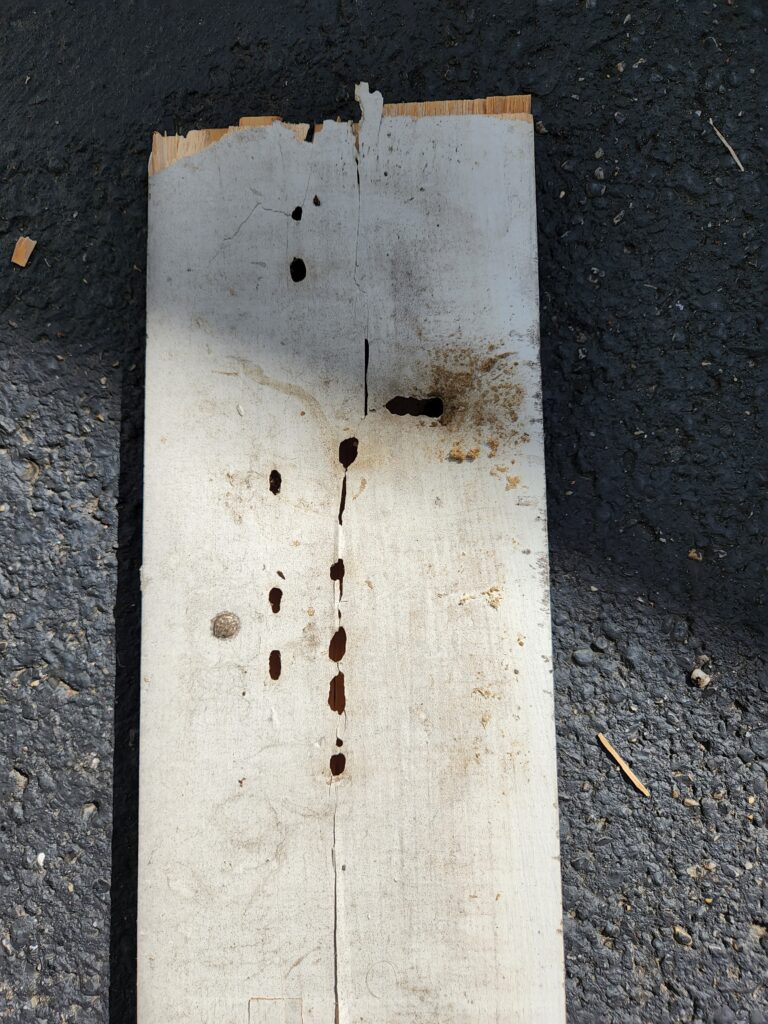
WHAT ATTRACTS BEES TO FASCIA BOARDS AND GUTTERS
-
DRYNESS
-
SAFETY
-
DEBRIS IN GUTTERS
-
SOFT AND ROTTED WOOD
 DRYNESS
DRYNESS
SAFETY
In addition to being hidden from rain nesting behind the gutters and fascia boards also provides a safe place away from predators. Believe it or not certain bird species like woodpeckers are a natural predator of carpenter bees and wasps. Hiding their nests somewhere completely out of sight is a safe idea.
DEBRIS IN GUTTERS
The number one attracter of bees, wasps, and pretty much any other pest to the gutter system or fascia boards is excess leaves/debris in the gutters. Neglecting gutter maintenance by allowing debris to clog up the system for extended periods of time attracts these unwanted pests. In addition to bees and wasps, other insects like mosquitos, ants, and termites are attracted to the decomposing material. Squirrels and birds love gutters with piles of leaves in them as well.
SOFT AND/OR ROTTED WOOD
Bees, wasps, and most other gutter pests are attracted to rotten fascia boards. Once the boards start to rot they become very soft. The soft wood is perfect for carpenter bees and termites as it makes the boards very easy to tunnel through. In the photo below you see a gutter that has pulled away from the fascia board due to excessive weight. (the gutter itself is full of shingle grit) If you look closely you can see this fascia board is completely rotted. It has changed a dark color which indicates that the fascia board has begun to decompose.
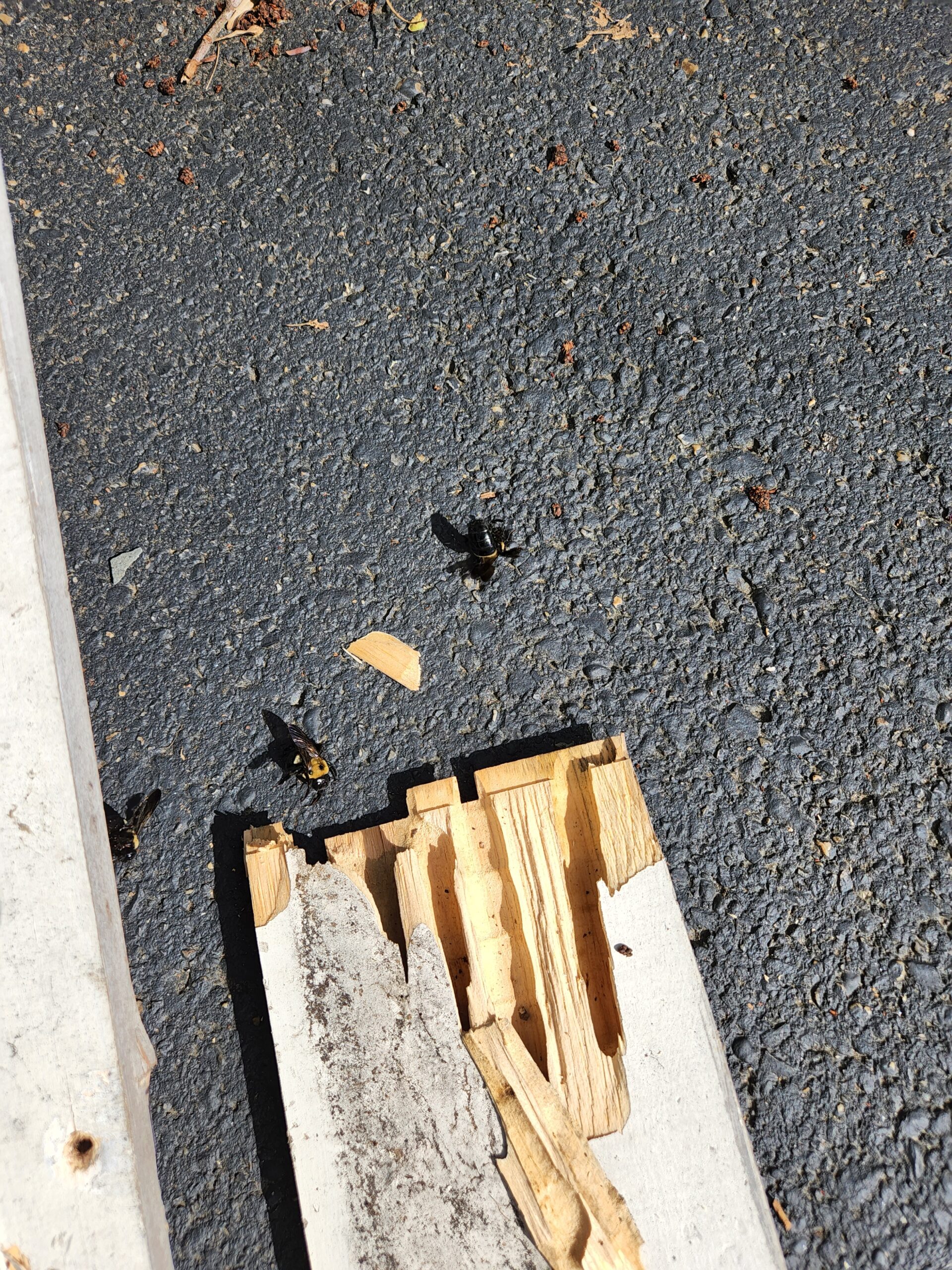
HOW TO DETER BEES FROM FASCIA BOARDS
-
BEE KEEPER/PEST REMOVAL/EXTERMINATOR
-
VINYL (PVC) FASCIA BOARD REPLACEMENT
-
BEE REPELLENT W/NEW FASCIA REPLACEMENT
-
FASCIA WRAP W/NEW FASCIA REPLACEMENT
-
SEAL OFF PROBLEM AREAS WITH FLASHING OR SEALANT
BEE KEEPER/PEST REMOVAL/EXTERMINATOR
Calling in an expert to eradicate bees away from your home’s exterior is often the first step before any type of fascia replacement or repairs are able to be performed. Since working on fascia or gutters that has active bees nest is dangerous, we recommend return 1-2 weeks after they have been removed.
In extreme situations it could require multiple services to rid the nest completely. It should also be noted that the bees could return to the nest within a couple years, so none of these options are a permanent long term solution. If you have a bee infestation in or behind your fascia board then it is suggested to replace that section of wood. Treating the existing fascia with repellents, pesticides, or pheromones will only last so long.
VINYL (PVC) FASCIA BOARD REPLACEMENT
Vinyl fascia is the perfect solution to wooden fascia as bees and other pests are not attracted to it. In addition vinyl fascia is also resistant to water, so they are rated to last much longer than traditional pine wood fascia boards.
Bees may eventually return to scope out the previous location at some point in time. If there is vinyl in place of where the wood used to be, they’ll leave once they see that the wood is gone.
In our opinion vinyl fascia replacement is the most effective solution to prevent bees from returning to your home after they’ve nested in fascia boards.
TREAT NEW FASCIA BOARD WITH BEE REPELLENTS
In addition to replacing the fascia boards with wooden fascia, it wouldn’t be a bad idea to apply some type of bee repellent to the new boards and/or surrounding areas. Most bees use pheromones to tag a location to return to, or to alert other bees there is something here like food, nest, or danger. These pheromones are almost impossible to mask and have a very far reach. In fact certain species of bees can smell pheromones miles away.
There are many types of bee repellents. Natural repellents such as citrus oil or almond oils are highly effective against carpenter bees, while peppermint oil works wonders against mud daubers. Pheromone based repellents or traps are also very effective against keeping bees from returning to your home.
ALUMINUM FASCIA WRAP WITH FASCIA BOARD REPLACEMENT
Another option worth considering is to have the new fascia boards wrapped with aluminum material. Fascia boards are commonly wrapped with aluminum to prevent moisture from contacting the fascia boards. The fascia wrap acts as a shield against the elements, and in this situation a shield from carpenter bees.
Fascia wrap does help to prevent bees from fascia, but it is not a fool proof solution. Unfortunately there are often small gaps that bees are able to squeeze through to find there way to the wood. Therefore if replacing with natural wood fascia boards, you may want to consider treating the board or area with some type of repellent as an extra precaution.
FLASHING OR SEALING PROBLEM AREAS
Another alternative to repellents or sometimes replacing the fascia board altogether is to seal off the area by using either flashing or caulk. Properly sealing wooden fascia to wooden soffit should be seamless with no gaps for bees to get behind the fascia boards. In some situations you may even be able to seal the active bees into the roofing eave so that they can’t get out or back in.
BEES NEST BEHIND FASCIA BOARDS
The photo below shows wasps nest that were attached to the backside of some fascia boards that were also infested with carpenter bees. The wasps and carpenter bees both seemed to be working together and thriving together up until the exterminator got there.
Once we pulled the fascia board down all of the homeowner’s suspicions were confirmed. There was a bee colony behind the fascia boards. However this was no longer just a normal carpenter bee problem, those nests were actually from a type of wasp called mud daubers. Therefore at this point we’ve confirmed carpenter bees and wasps colonies were in the same location living alongside one another. Good thing for us is these colonies were exterminated before they called us to change the fascia boards out. Otherwise it would have been a bad day for whoever pulled this board off of the home.
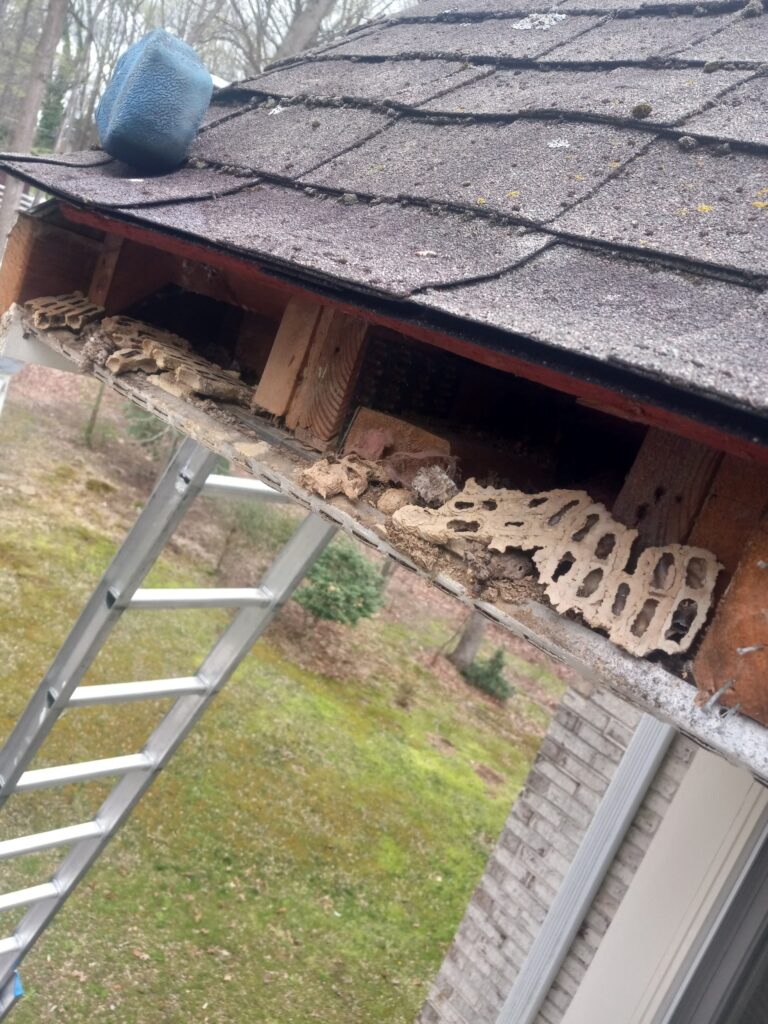
CARPENTER BEES IN FASCIA BOARD VIDEO
In this video we show the fascia boards we removed and replaced on this customer’s home. There were still live carpenter bees inside some of the boards. Be sure to turn your volume up in the first clip to hear the bees!
CHECK OUT OTHER ARTICLES BY MY GUTTER DOCTOR.
Why Birds Nest In Gutters by My Gutter Doctor
Is Spring Gutter Cleaning Necessary by My Gutter Doctor
Fascia Board Rot by My Gutter Doctor
When to Clean Gutters In Fall by My Gutter Doctor
Fascia Board Repair by My Gutter Doctor
Don’t just take our word for it. See what other experts are also saying.
Carpenter Bees : Entomology by UK College of Agriculture
How to Get Rid of Carpenter Bees by Pest World
Carpenter Bees in Fascia Board by Carpenter Bee Control
The Boards and the Bees by Belk Custom Builders


